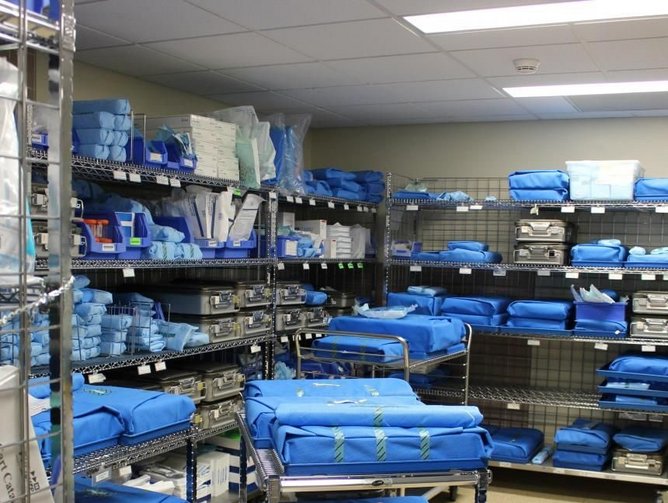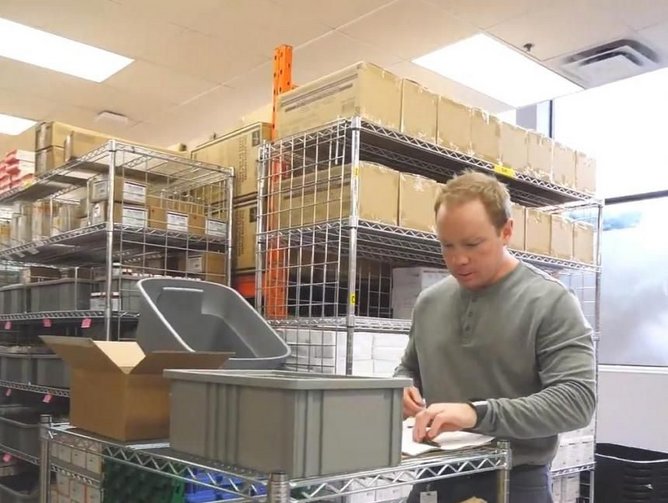TransForm SSO: improving Ontarian healthcare through supply chain innovation
TransForm Shared Service Organization (TransForm SSO) provides an innovative, end-to-end supply chain service driven through one vital goal: offering healthcare employees the support they need in order to provide exceptional patient care across Ontario. TransForm was established in 2013, following the amalgamation of two shared service organisations and, since then, has embarked on a journey of consolidation and digital innovation that has seen its approach to managing healthcare supply chains evolve.
Director of Supply Chain, Renee McIntyre, has been instrumental in this journey. Today, she is responsible for overseeing all day to day operations of TransForm’s supply chain division, as she explains: “We provide a true end-to-end service covering everything from market research and procurement, through to strategic sourcing, contract and vendor management, capital procurement, and value analysis. We support five multi-site hospital organisations across the Erie-St. Clair region in southwest Ontario, as well as third party customers such as the Local Health Integration Network Home and Community Care. Alongside those services listed, we also support the hospitals’ internal logistics and provide value by maximising savings and coordinating product conversions and recalls.”
Since its establishment, TransForm has implemented innovative and digitally-driven methods of improving its services, in line with the wider digitalisation of the supply chain sector. “With our organisation and the structure that we have in place, we’ve been able to take great steps to automate our supply chain operations, to implement new data analytics systems and provide significantly more value for money in healthcare – which is an absolutely key goal,” says McIntyre. “For example, we’ve migrated all our hospitals onto a single ERP platform with a single item master file that we manage for them; while that alone may not be new to the supply chain industry, it has established the foundation to achieve significant savings and create efficiencies for our members.”
This evolution has occurred despite the more challenging conditions in which TransForm SSO – a public sector entity working in an industry primarily focused on providing the best value services – operates. “I would say that healthcare lags behind other industries when it comes to supply chain,” McIntyre states. “Historically, processes like barcoding scanning and the appropriate and direct supply chain principles that you would apply to the private or retail sectors have taken a back seat when it comes to healthcare. In Ontario, the health sector represents 41% of overall programme spending, with ever increasing pressures to reduce costs and find efficiencies. However, we’ve seen significant movement more recently as these supply chain principles take more of a precedent in healthcare.”
TransForm SSO has become a frontrunner in implementing some of those changes, particularly, says McIntyre, with regards to expanding beyond acute care and hospitals. “We’re the only shared service organisation in Ontario that has integrated the Home and Community Care supply chains into what we do, whereas most others focus solely on the hospital sector. This really epitomises our vision of expanding our services to cover the entire patient care continuum. For that reason, we are leaders in defining the direction that public procurement can go in Ontario, and we’re providing the game plan to other shared service organisations in the province.”
While technology has facilitated TransForm’s development, McIntyre is also keen to highlight the importance of the collaborative approach to providing healthcare supply chain in Ontario. On a broader level, legislative changes in the province have led to a more coordinated healthcare offering, but TransForm has also worked closely with its member hospitals and other shared service organisations to drive efficiencies. “The strategic direction in the early stages really did come from the hospitals with which we work,” she says. “Our member hospitals comprise our board of directors, and so we had that leadership buy-in very early on. This led to, in my opinion, one of our biggest differentiators – that all our hospitals share information across a single platform. From a data and operational perspective, it’s a huge benefit to the way we work.” TransForm places a strong focus on collaboration and partnerships to continuously improve its operations. “The ability to work closely with our vendor partners and leverage our relationships to help achieve value for the healthcare system is a team priority. One such example is a partnership with Scotiabank, which has been able to directly reduce our costs of delivery and enable reinvestment to further improve our digitisation goals.”
“Our ERP system is a multi-solutions platform that is backed by GHX’s robust ecommerce platform. This is the centrepiece of our supply chain operation: it validates transactions against our contracts and validates orders in real time against vendor catalogue and description data to minimize order exceptions and is layered upon a BI tool to support our data analysis in a seamless manner. We’ve put significant focus on automation into the supply chain. A large portion of our business is fully automated from the point of the purchase order being sent, through to being digitally acknowledged by the vendor, matched and then paid, with no human intervention. Having a talented and dedicated team and leveraging our technology has allowed us to offer a very strong supply chain operation that, in turn, allows everyone to focus on how we can achieve the best value for hospitals so they can save lives.”
Despite these achievements, McIntyre is keen that the strategic focus of the business continues. She cites two key areas for the foreseeable future: growing TransForm SSO’s Home and Community care business, including closer collaboration and sharing with other health service providers, as well as continuing to implement technology to tie in supply chain data to clinical outcomes. The latter, she says, “is a growing need in healthcare: the ability for us to evaluate how we can tie in clinical patient outcomes and utilisation data to our own supply chain in an automated way to bring even greater value to our organisation. Looking further ahead, I see the ability to implement our supply chain model across the broader public sector as a significant focus moving forward. Ideally, that would involve finding all those other public sector entities within our region and collaborating to develop a sustainable model that allows us to scale it right across the province. I think that could bring tremendous value to the public sector in the whole of Ontario, and it would be great to lead that drive.”





